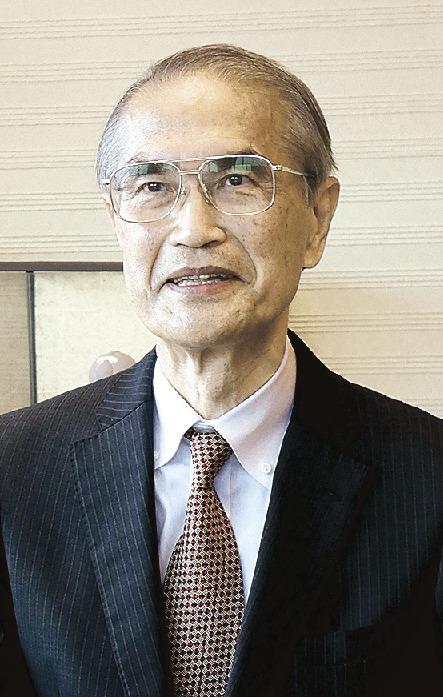◇Introduction of DX infrastructure after nature assessment
The rector of Kochi University of Technology, Masahiko Isobe, widely known as a leading authority in coastal engineering, will retire at the end of this month. Given the high probability of a super-strong earthquake in the Nankai Trough or a super-strong earthquake along the Japan and Chishima Trench, how should we prepare for a tsunami caused by a large-scale earthquake? big cause? We asked Mr. Isobe, who has long been a leader in coastal disaster preparedness, to talk about the current state of tsunami countermeasures, future prospects and a message to the construction industry. support the development of infrastructure for disaster prevention.

Isobe gave an interview on the afternoon of the 16th in Kami City, Kochi Prefecture.
After the great earthquake in eastern Japan, Mr. Isobe, as a member of the government's Central Disaster Prevention Council, came up with the idea of "two-stage disaster prevention" as a road map. for future earthquake and tsunami response measures. In two-stage disaster prevention, flooding is prevented by building embankments and other structures against tsunamis that occur every few decades to hundreds of years (Grade 1). In the event of a maximum (category 2) earthquake, buy time to evacuate and keep necessary socioeconomic activities to a minimum.
Isobe highlighted the results, saying, "We have created a tsunami disaster preparedness system that can achieve adequate disaster prevention and mitigation effectiveness against any type of tsunami." During the development of infrastructure such as embankments and wharf walls, structures were designed taking into account the first class tsunami and the concept of "sustainable structure" was born, making the embankment less likely to break. even if the external force exceeds that level causing overflow.
“We have a preliminary framework for disaster preparedness, but actual operation will be a challenge going forward,” he assured himself. With the goal of building a two-stage disaster prevention system that takes into account the increasing external forces caused by climate change such as sea level rise and increasing storms, he said. : "External forces will become more and more serious. The concept of time is focused not only on construction, but also on operation and maintenance." ' into questionable design."
Forecasting climate change has many different scenarios, it is necessary to respond flexibly when developing infrastructure. Mr. Isobe cites "useful living" as a suggestion to tackle this problem. “For the next 50 years, which is considered to have a generally useful life, it will be designed to a degree that can cope with climate change both above and below,” he said.
Regarding costs, emphasis is placed on “selective and concentrated” public investment. "As an engineer, I have to devise wisdom to ensure safety at a cost commensurate with the strength of the whole nation," he said. To promote public understanding of public works, it is necessary to approach the mindset ``When you tell people something, you cannot communicate it with necessary and sufficient conditions.
We recommend promoting DX for the construction industry to develop disaster prevention infrastructure. On the other hand, there are still many mistakes in simulation in virtual space, and he points out, ``Engineers are required to be able to connect real and virtual space and detect flaws in simulation. ''The phenomena occurring on the coast are irregular and complex, so their nature is difficult to grasp, but it can be said that the nature of phenomena can be grasped through experiments at research facilities. rescue.
I believe that searching around the web after grasping the essence will lead to the development of clairvoyance. He expressed hope that the introduction of DX while demonstrating such capabilities will be of great benefit to the construction industry.






